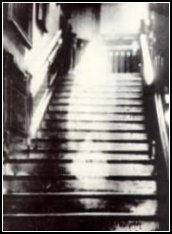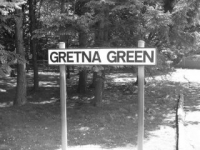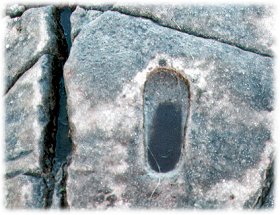Croft Moraig
One of the most impressive and easy to access stone circles in the Tay valley: Croft Moraig is situated just off the A827 between Aberfeldy and the head of Loch Tay. The sites long history as a changing ritual centre in the Neolithic and early Bronze Age make it one of the most important monuments in the area.
 The valley of the River Tay has an abundance of ceremonial/ritual sites dating from the Neolithic to Bronze Age, and there is evidence that it was used as a route way between South West and North East Scotland and beyond during this period.
The valley of the River Tay has an abundance of ceremonial/ritual sites dating from the Neolithic to Bronze Age, and there is evidence that it was used as a route way between South West and North East Scotland and beyond during this period.
Activity at the site has been categorised into 3 distinct phases of construction over perhaps as many as 1000 years, following excavation of the site by Stuart Piggott and Derek Simpson in 1965.
The first phase of the site was a horseshoe ring of 14 posts with an opening to the South West, erected by the first farming communities in the area over 5000 years ago. Parallel rows of posts led to this circular enclosure that surrounded a large flat that showed evidence of burning and charcoal perhaps as a hearth. It has been suggested that there may have been some kind of religious dwelling (1) here in this period.
 In phase II these upright timbers were removed and replaced with an oval of 8 stones surrounded by an earth and stone bank with kerb stones. A large recumbent slab was part of this structure of kerbs, decorated with cup and ring markings and in line with the Midsummer full moon. The stones of this circle are graded in height with the tallest in the SSW. The smallest stone in the NE is also decorated with cup and ring markings and from the centre of the circle is aligned roughly with the Midsummer sunrise, suggesting that these markings have a relevance to astronomical alignment.
In phase II these upright timbers were removed and replaced with an oval of 8 stones surrounded by an earth and stone bank with kerb stones. A large recumbent slab was part of this structure of kerbs, decorated with cup and ring markings and in line with the Midsummer full moon. The stones of this circle are graded in height with the tallest in the SSW. The smallest stone in the NE is also decorated with cup and ring markings and from the centre of the circle is aligned roughly with the Midsummer sunrise, suggesting that these markings have a relevance to astronomical alignment.
In Phase III a circle of nine more massive stones was constructed outside the existing circle to create a double ring with two outliers towards the South East, which may have formed an entrance to the site as at Castlerigg and Swinside in Cumbria.
Excavations also discovered deposits of quarts stones in the Northern part of the site, the importance of quarts to our ancestors has been lost to us. There is a however a finely worked quarts arrow head of contemporary age on display in the Crannog centre nearby, and it may have served as a good working stone in the absence of flint. Or perhaps they were important for some long lost religious significance. It is interesting to note that my four year old son collected only quarts stones when on a nearby nature trail so perhaps there is some instinctive attraction to quarts (or they just looked nice and shiny in this instance). I have heard quarts pebbles referred to as God stones while collecting folklore; one of the great mysteries is that we will never really know the exact beliefs of the people from pre-history.
Time has taken its toll on the site and some of the stones of phase II and phase III have disappeared and fallen and a good section of the stone bank has been plundered for building material in the last few hundred years. The site is still impressive and atmospheric even though now incomplete and stands as a testimony to the generations of settlers who used the site for what exact purposes we still have to discover.
Neolithic Burial mounds in this area are characterised by round mounds as opposed to the contemporary long mounds in other parts of Britain. Another distinct feature of the area is the small stone circles consisting of 4 stones that are peculiar to this area.
The circle stands close to a working farm and care must be taken not to block the access road.
(1) Aubrey Burl Rings of Stone




Recent Comments